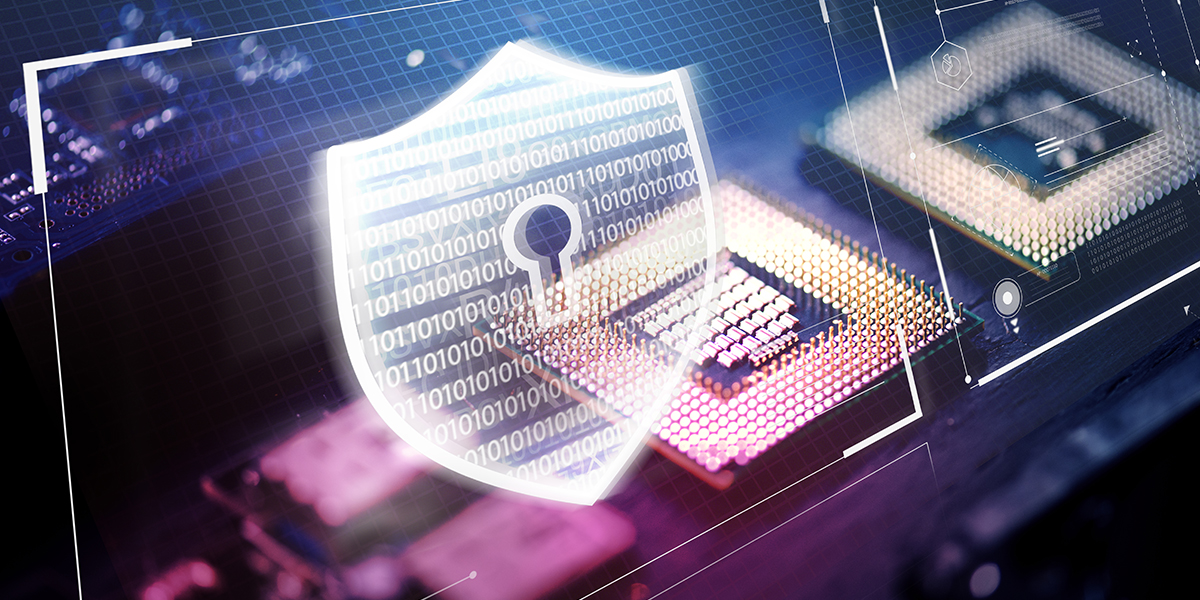In a modern digital landscape rife with swirling concerns around data protection, cybersecurity best practices are of paramount importance for businesses of all sizes. With the increasing prevalence of data breaches and privacy concerns, organizations must adopt robust security measures to safeguard their valuable information. One such method is end-to-end encryption (E2EE), which is designed to provide a strong layer of security by encrypting communications from the sender to the recipient, ensuring only authorized parties can access and decipher the information. You can read more about E2EE in our introduction to the topic. In this comprehensive guide, we will take a closer look at end-to-end encryption and show you the 10 steps you can take to create a safer environment for your precious data.
Watch Out for these 6 Types of Phishing Scams
What is End-to-End Encryption (E2EE)?
End-to-end encryption is a robust encryption method designed to ensure secure and private communication between two parties. Unlike traditional encryption methods which may only encrypt data during transmission, E2EE encrypts the data at the sender’s end and decrypts it at the receiver’s end, making it accessible only to authorized parties. In simpler terms, it creates a secure tunnel where data remains encrypted throughout the entire communication process, minimizing the risk of unauthorized access and interception.
How Does End-to-End Encryption Work?
End-to-end encryption works by employing encryption keys and algorithms to secure data transmission. When a user sends a message or transfers data, the information is encrypted on their device using a unique encryption key. This encrypted data is then transmitted to the recipient’s device. The recipient’s device uses the corresponding decryption key to decode the message and make it readable.
A crucial feature of E2EE is that the encryption and decryption processes occur exclusively on the sender and recipient’s devices. So, even if the communication channel is compromised, the encrypted data remains unintelligible to unauthorized entities. The encryption keys used in E2EE are typically securely exchanged and managed to ensure secure communication between the sender and the recipient.
Why Should Businesses Adopt End-to-End Encryption?
The truth of this fact simply cannot be overstated: businesses must prioritize data security and safeguard sensitive information. End-to-end encryption plays a pivotal role in enhancing cybersecurity architecture for several reasons:
Data Protection and Privacy
End-to-end encryption enables businesses to protect their data from unauthorized access. By encrypting data at the sender’s end and decrypting it only on the recipient’s device, E2EE ensures the data remains inaccessible to unauthorized individuals. In tandem, this provides an extra layer of privacy and protects sensitive business information, customer data, trade secrets, and even intellectual property.

End-to-end encryption gives your team the confidence they need to know their messages are safe.
Protection Against Data Interception
Traditional encryption methods may only encrypt data during transmission, leaving it vulnerable to interception during storage or transit. E2EE mitigates this risk by protecting data throughout the entire communication process. Because of the end-to-end encryption process, encrypted data remains secure even if it’s transmitted over untrusted networks or intercepted by hackers, ensuring the confidentiality and integrity of critical information.
Compliance with Regulations and Standards
With more stringent data protection regulations—such as the European Union’s General Data Protection Regulation (GDPR) and various industry-specific compliance frameworks like HIPAA or PCI DSS—coming into legislation, businesses must prioritize data security to maintain compliance. Implementing end-to-end encryption helps organizations meet regulatory requirements by safeguarding data privacy and confidentiality, reducing the risk of data breaches, and ensuring compliance with industry standards.
Protection Against Insider Threats
Internal threats pose significant risks to a business’s data security. By employing E2EE, businesses can address these concerns by limiting access to sensitive information solely to authorized personnel. This ensures that even if an insider gains access to the encrypted data, they cannot decipher it without the appropriate decryption key, which maintains data integrity and reduces the risk of internal data breaches.
Customer Trust and Reputation
Data breaches can have severe consequences for a business’s reputation and erode customer trust. Demonstrating a commitment to data security and privacy with E2EE enhances customer trust and confidence. Customers feel reassured knowing their sensitive information is protected by a robust encryption method. By prioritizing the security of customer data, businesses can differentiate themselves from competitors and build a reputation for trustworthiness.
End-to-end encryption is a powerful tool in bolstering a business’ cybersecurity architecture. By implementing E2EE, organizations can protect sensitive data, enhance privacy, meet regulatory requirements, mitigate internal and external threats, and bolster customer trust. As cybercrime continues to evolve, E2EE plays a crucial role in safeguarding businesses from potential data breaches and ensuring the secure transmission of information.
An End-to-End Guide to End-to-End Encryption
As businesses navigate the digital landscape and grapple with an ever-changing threat landscape, ensuring the security and privacy of sensitive information has become a paramount concern. In an era of advanced cyberattacks and growing privacy concerns, the implementation of robust encryption methods is vital to protect data from unauthorized access and interception. End-to-end encryption is at the forefront of data protection, providing a strong layer of security by encrypting communications from the sender to the recipient in a way that only authorized parties can decipher the information. To help you navigate the complexities of implementing E2EE, we encourage you to evaluate the key considerations, technical aspects, and best practices for successfully integrating it into your organization’s cybersecurity architecture.

End-to-end encryption sets your business up for success, but proper implementation is crucial.
1. Define the Scope and Requirements
Before embarking on your E2EE journey, take a few moments to understand the scope and requirements of your encryption strategy. Evaluate the communication channels you use most and identify the ones in need of end-to-end encryption. Consider your organization’s security and compliance requirements to ensure the implementation aligns with industry standards and regulatory frameworks. By clearly defining the scope, you can effectively tailor your E2EE implementation to suit your specific needs.
2. Perform a Threat Assessment
A thorough understanding of the potential threats and vulnerabilities is essential for E2EE to be most effective. Start by conducting a threat assessment to identify the risks associated with unauthorized access, interception, or tampering of data. Examine the types of data that require encryption and familiarize yourself with the different encryption methods available for end-to-end encryption. Evaluate encryption algorithms based on their scalability, security, and user experience to choose the most suitable options for your business.
3. Choose Suitable Encryption Algorithms and Tools
The strength and compatibility of encryption algorithms and tools play a vital role in safeguarding your data. Select encryption algorithms which offer the desired level of security while being efficient in terms of performance. Consider factors such as cryptographic strength and compatibility with your communication platform when making your choice. Additionally, carefully evaluate and choose encryption software that aligns with your organization’s needs, taking into account factors like platform compatibility and integration capabilities.
4. Implement Key Management
Effective key management is critical to the successful implementation of E2EE. Design and implement a secure key management system, including processes for generating, provisioning, and protecting encryption keys. Consider utilizing secure key exchange protocols for added security during key distribution. Establish a robust strategy for key generation, distribution, and storage, ensuring only authorized individuals have access to the encryption keys. By implementing secure key management practices, you strengthen the overall security of your E2EE implementation.
5. Develop Secure Communication Protocols
Designing secure communication protocols is a key aspect of successful E2EE implementation. Develop protocols which incorporate end-to-end encryption, encrypting data at the sender’s end and decrypting it at the receiver’s end using shared encryption keys. Define how the encryption process will be implemented within your systems, taking into consideration factors such as user interfaces, encryption libraries, or API integrations. When you design secure communication protocols, you streamline the implementation process and enhance the overall security of your communications.
6. Integrate Encryption Libraries or Tools, Test, and Validate the Implementation
To mitigate the risk of implementation errors, it is advisable to utilize established encryption libraries or tools that provide robust and tested implementations of encryption algorithms. Integration with such libraries or tools can save time and effort while ensuring the security of your implementation. Thoroughly test and validate the implementation, including encryption/decryption processes, key management, and secure communication protocols. It is recommended to set up a dedicated test environment to verify the encryption solution and troubleshoot issues as they arise.

End-to-end encryption means your customers’ data and your correspondence with them are safer!
7. Conduct Security Audits and Reviews
Engaging security experts to perform audits and reviews of the implemented encryption system is crucial. This step helps identify vulnerabilities, ensures compliance with security best practices, and addresses any potential weaknesses. Implement the encryption solution across necessary systems, including communication platforms, servers, and databases, to consistently encrypt data and eliminate any risk of exposure. Regular security audits and reviews will bolster the effectiveness of your E2EE implementation and help maintain a proactive security posture.
8. Establish Incident Response Procedures
Being prepared to mitigate risks and handle security breaches is vital for any organization. Establishing incident response procedures allows for a proactive approach to minimizing potential damage. Develop a plan to address security incidents promptly and effectively, including steps to mitigate risks and recover encrypted data. Defining and documenting your incident response strategy will help you minimize the impact of any security incidents.
9. Educate Users
User education plays a pivotal role in the successful implementation of E2EE. Provide comprehensive training and resources to employees on how to use the encryption solution effectively. Educate them about the importance of end-to-end encryption and security best practices, such as using strong passwords and enabling multi-factor authentication. Empowering users with knowledge will strengthen your organization’s overall security posture and ensure the optimal utilization of the encryption solution.
10. Maintain and Update
To ensure ongoing security, it is crucial to regularly update encryption libraries and tools. Stay informed about the latest advancements in security and cryptography and adapt your implementation accordingly. Establish a proactive approach by regularly monitoring the encryption setup and keeping up to date with security patches, software updates, and advancements in encryption technology.
End-to-End Encryption from Innovative Integration
End-to-End Encryption (E2EE) is an essential tool in the battle against data breaches and privacy concerns. By implementing E2EE, businesses can establish a robust layer of security to protect their sensitive data. When you implement E2EE into your day-to-day work, you bolster your organization’s data privacy and security, and you gain a competitive edge. Though getting started may seem daunting, you can trust the team at Innovative Integration to evaluate and continuously improve your organization’s cybersecurity infrastructure and optimize your information technology. Ready to get started or just want to know more about us and what we do? Contact Innovative Integration and trust all your IT needs to us so you can get back to doing what you do best: running your business.





